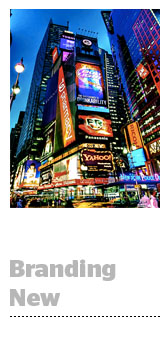 One sign pointing to the maturation of programmatic ad buying tech is the growth of brand messaging.
One sign pointing to the maturation of programmatic ad buying tech is the growth of brand messaging.
Whereas just last year, ads bought programmatically were 100% direct-response due to retargeting capabilities, the splits now are around 20/80, said Andrew Casale, VP of strategy at supply-side ad tech provider Casale Media.
“We speculate that marketer offerings more suited to brand communications will show a rise in programmatic spend through 2014, as initial tests prove successful and the creative application of first-party data to media selection evolves,” stated Casale Media’s Q1 2014 report on the state of programmatic in the United States, released Wednesday (download it here).
Casale came to this conclusion by following trends collected in the company’s previous three quarterly reports, the first one dating back to Q1 2012. “If you look at all four reports holistically, we don’t see major marketers fall off,” Casale told AdExchanger. “Those that participated two-plus years ago still participate today, and to a bigger degree.”
These early programmatic participants include retailers, telcos and auto companies, all of whom use and continue to use direct-response units. Case in point: The top 10 brands buying programmatically in Q1 2014, which collectively made up 18.2% of the spending, each fall into one of those three categories.
The change, which Casale said began happening this past year, is an influx of consumer packaged goods (CPG) companies, which tend more toward brand messaging (though not exclusively, since many CPGs offer coupons in their ad units). “There isn’t one I can think of that isn’t in the (programmatic) market now,” Casale said.
From the second half of 2013 through Q1 2014, several CPG brands, including Unilever, Nestle, Mars, Mondelez and Johnson & Johnson, debuted in the top 25 in programmatic spend.
“This is a stark contrast to the first half of 2013 during which CPG brands were absent from the top 25 spenders list,” the report observed.
The suddenness with which CPGs are pushing into programmatic recalls the way the telcos began diving in two years ago, Casale said.
An influx of local marketers buying programmatically has also driven a rise in brand messaging.
“We’ve highlighted this in past reports, because even though local is tiny, its growth is massive,” Casale said, pointing out that programmatic spend by local brands more than doubled year over year. In Q1 2013, local companies constituted 2% of programmatic spend; it’s up to 4.7% in Q1 2014. Ad tech companies like TellApart and AdRoll have made it easier for local businesses to buy through programmatic channels.
“With local campaigns, buying media feels hypertargeted,” Casale said. Many of the messages advertise promotions and are designed to drive in-store traffic, instead of click-to-buy activities. “Lots of events, ZIP-style targeted placements. You’ll look at the ad and check out the store on the weekend.”
Despite the increase of branding dollars in programmatic, this growth will fluctuate. While Casale predicted by Q4 2014, branding could account for 40% of spend, it’s important to remember that branding is highly seasonal. While programmatic is always-on, branding isn’t.
Still, it bears noting that branding is increasingly becoming a part of programmatic spend.
“It’s not everything, it’s not half, but it used to be nothing,” Casale said. He said he suspects marketers investing in branding through programmatic are right now working to formulate their strategies for the year’s end, when the holidays will bring out an influx in branding activities.
“They’re using the first half of the year to build their models and figure out what the battle plans will be, and that will materialize when it matters,” Casale said.














